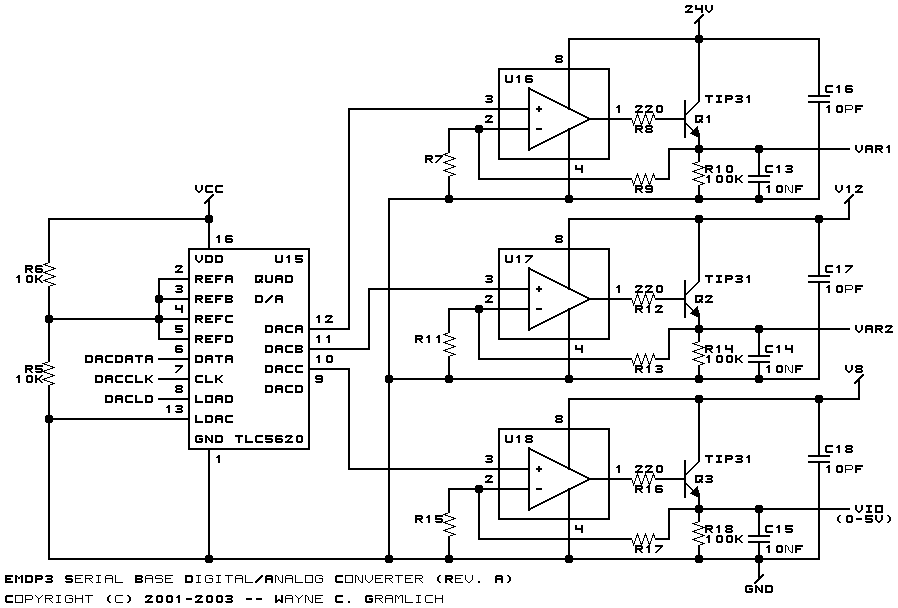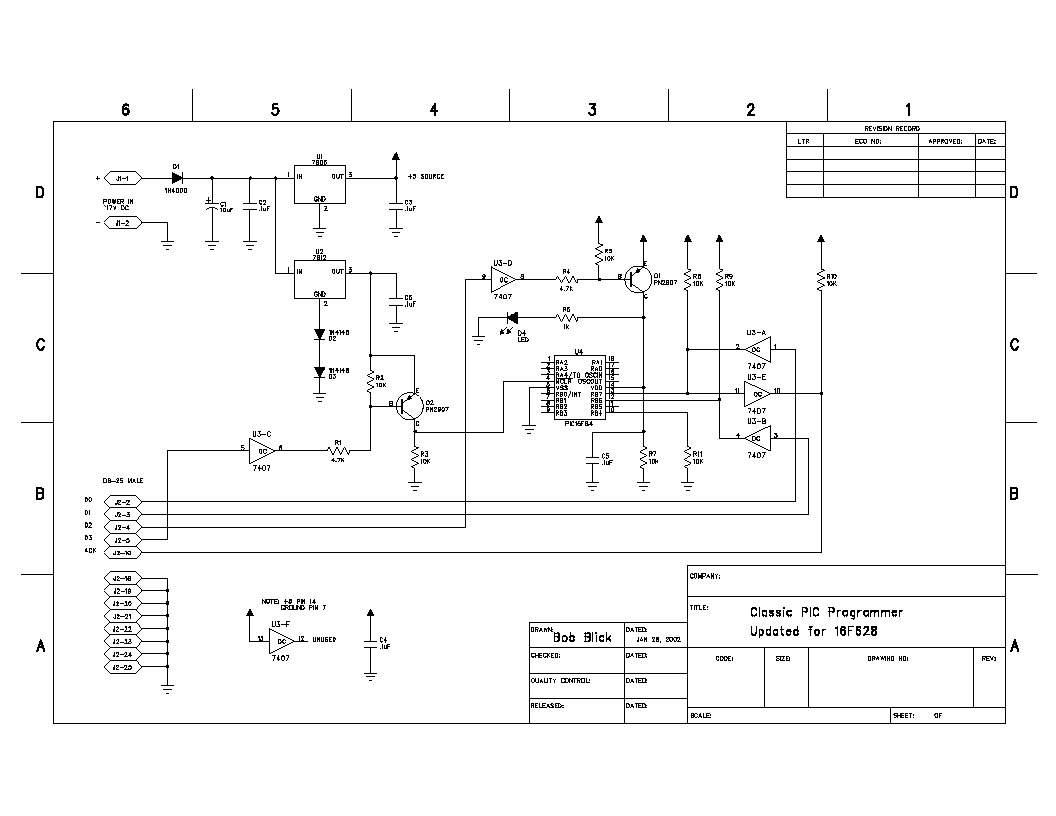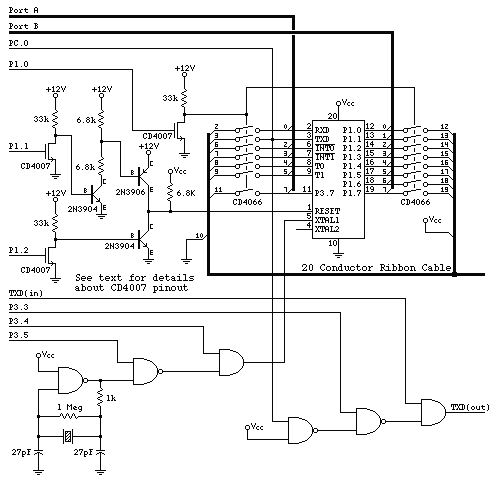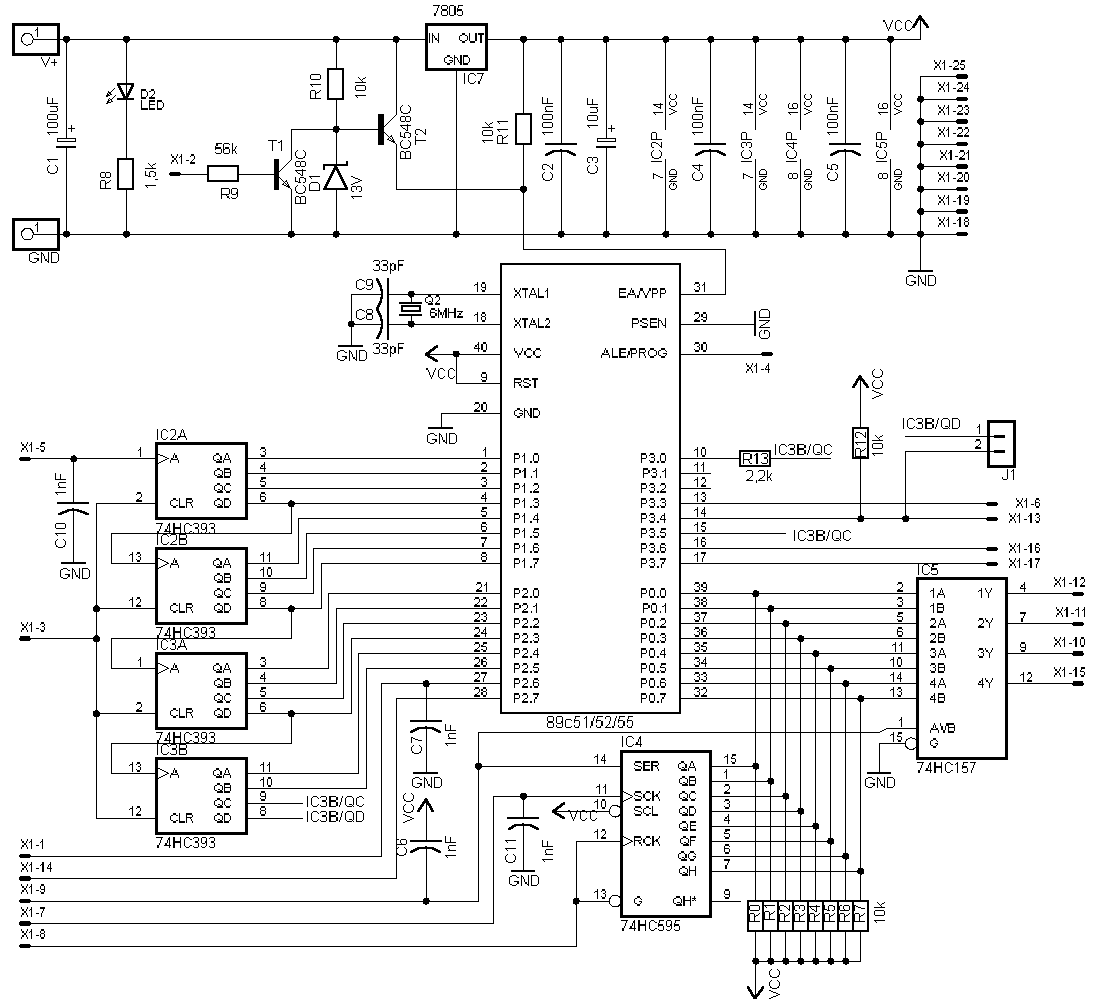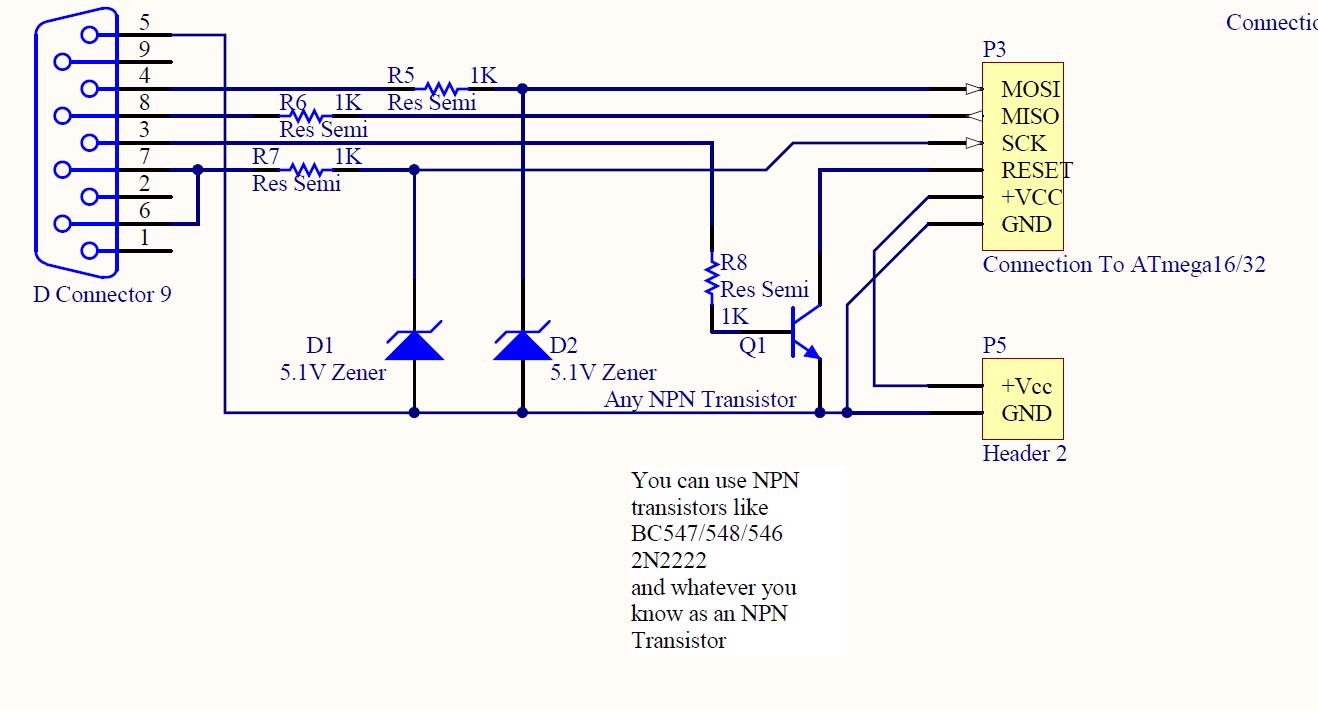
AT89xx051 PROGRAMMER
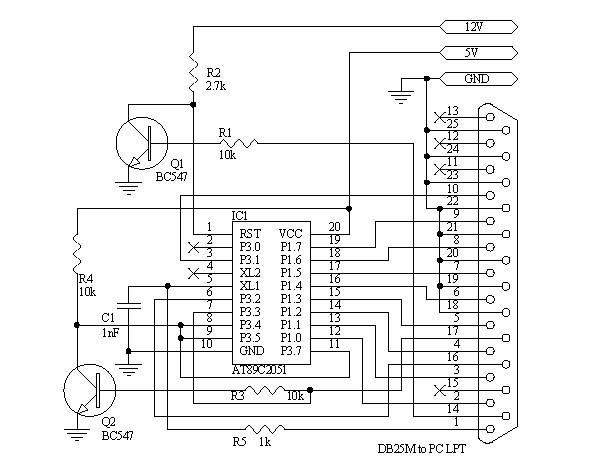
A 15V DC adapter is required. An electrolytic capacitor should be placed across the input of the voltage regulator. If a capacitor is connected to the output pin of the 7812 voltage regulator with respect to ground, a bypass diode must be added in reverse orientation between the input and output of the regulator to protect it from reverse voltage.
The circuit requires a 15V DC power supply, which serves as the input voltage for the voltage regulator, specifically the 7812 model. The 7812 voltage regulator is designed to output a stable 12V DC from a higher voltage input. To ensure proper operation and stability of the voltage regulator, an electrolytic capacitor is recommended across the input terminals of the regulator. This capacitor helps filter out any voltage spikes or fluctuations from the power supply, providing a smoother input voltage to the regulator.
When a capacitor is connected to the output pin of the 7812 with respect to ground, it is essential to include a bypass diode. This diode should be connected in reverse orientation between the input and output pins of the regulator. The purpose of this diode is to prevent any potential reverse voltage that may occur, which could damage the regulator. In normal operation, the diode remains reverse-biased, effectively isolating the input from the output. However, in the event of a fault condition or sudden voltage drop, the diode will conduct, protecting the regulator from reverse voltage and ensuring reliable circuit performance.
In summary, this circuit configuration emphasizes the importance of using an electrolytic capacitor for input stability and a bypass diode for protection against reverse voltage, thus ensuring the longevity and reliability of the 7812 voltage regulator in various applications.It requires a 15VDC adapter. An electrolyte capacitor is needed across the regulator input. If the capacitor is added in 7812`s OUT pin w. r. t. ground, then a bypass diode should be added in reverse to IN and OUT of the regulator, just to save it from reverse voltage. 🔗 External reference
The circuit requires a 15V DC power supply, which serves as the input voltage for the voltage regulator, specifically the 7812 model. The 7812 voltage regulator is designed to output a stable 12V DC from a higher voltage input. To ensure proper operation and stability of the voltage regulator, an electrolytic capacitor is recommended across the input terminals of the regulator. This capacitor helps filter out any voltage spikes or fluctuations from the power supply, providing a smoother input voltage to the regulator.
When a capacitor is connected to the output pin of the 7812 with respect to ground, it is essential to include a bypass diode. This diode should be connected in reverse orientation between the input and output pins of the regulator. The purpose of this diode is to prevent any potential reverse voltage that may occur, which could damage the regulator. In normal operation, the diode remains reverse-biased, effectively isolating the input from the output. However, in the event of a fault condition or sudden voltage drop, the diode will conduct, protecting the regulator from reverse voltage and ensuring reliable circuit performance.
In summary, this circuit configuration emphasizes the importance of using an electrolytic capacitor for input stability and a bypass diode for protection against reverse voltage, thus ensuring the longevity and reliability of the 7812 voltage regulator in various applications.It requires a 15VDC adapter. An electrolyte capacitor is needed across the regulator input. If the capacitor is added in 7812`s OUT pin w. r. t. ground, then a bypass diode should be added in reverse to IN and OUT of the regulator, just to save it from reverse voltage. 🔗 External reference
